|
Soho, tucked into the very heart of London, has been a melting pot of people and culture for a hundred years or more. The arrival of the espresso bars there in the 1950s opened up a whole new phase of possibilities for meeting up, hanging out, and sizing up potential allies. ‘The Group’, as the original Cabbala group of this website was known, first came together in these coffee bars in the late 1950s. Here three key figures held court - Alan Bain, Glyn Davies and Tony Potter – offering debates and discussions to anyone interested in new horizons and ‘the big questions’ of life. Although some of this background has been covered in earlier blogs here (links to the first of a sequence of related posts), it’s worth a further look at the unique Soho café culture of the period, which provided a unique milieu to find kindred spirits. ‘The fifties were a time of austerity, of punitive conventions, of a grey uniformity….Soho was the only area in London where the rules didn’t apply,’ said critic and musician George Melly. A note on geography: In keeping with various other studies and memoirs of Soho coffee bars, I’m stretching the geographical boundaries a little wider to include neighbouring areas. The café habituees of the time didn’t draw a hard line where Soho officially ended: people spilled across the Strand towards Charing Cross and up towards Covent Garden market when staking out their favourite haunts. This applies to Group members too. The Soho Crowd For some, entering the Soho scene was primarily a chance to break free of stuffy rules and live on the wild side. For others it offered a source of artistic inspiration and experiment. But for others still, it was a place where you could be a seeker of knowledge, in a more spiritual sense. However, it wasn’t about narrowing down your network, in your quest to find kindred spirits. Once you had found your particular tribe, you could make that a focus while still mixing freely with a fascinating variety of people. The common ground was often music: live rock and roll, skiffle, folk and blues were a key feature of many coffee bars. Several members of the Group were proficient musicians, and music may have been the reason why they were on the Soho scene in the first place. Soho was not just coffee bars of course - many artists, for instance, preferred drinking in its pubs –nor was the coffee bar unique to Soho. Once the new concept had taken off, around 1952, espresso bars with Gaggia machines sprang up like hissing mushrooms all over London. There were some 600 in business in the capital by 1960. But the combination of the cafes and the Soho scene provided something special, which early Group members took advantage of. This scene emerged at a point of change in society, about a decade after World War Two ended. Post-war Britain may have been a dreary society in many respects, but here in the centre of London, possibilities were sizzling. It was the kind of moment which arises every now and then, when new impulses arise and can take root. In the case of the Group, what came out of those gatherings is still going strong, in different forms, some sixty-five years later. Perhaps this wasn’t just chance, and perhaps we are on the brink of another kind of change? As my colleague Richard Smoley points out: ‘Gurdjieff said that during times of upheaval, unusual amounts of knowledge are set loose and made available. He was thinking of the Russian Revolution, but we could ask whether the huge amount of knowledge that was made available in the last quarter of the twentieth century was to prepare us for these upheavals.’ (Recent email correspondence.) The Coffee Bar Scene To open a door into the world of Soho coffee bars, here is an extract from an internet memoir by ‘Goosey Anne’, (real name unknown, and not a member of the Soho Group): I was living and working in London in the early 1950s and most of my leisure time was spent in the newly-opened coffee houses in and around Soho. These were the haunt of the bohemians – artists, writers, `resting` actors, musicians and `characters` closely followed by students, nurses and people like me who had a good day job but enjoyed their company in the evenings. It was a mainly harmless pursuit – we would meet at one given coffee bar and during the course of the evening make our way onto a couple of others. The new Gaggia coffee machines were installed in most of the places – huge, glistening chrome affairs that hissed steam into the air to mingle with the cigarette smoke, for nearly everyone smoked and the atmosphere was pretty fetid. Coffee cost 9d (old pence) and usually we would all make one cup each last all evening. We would sit and talk and talk and talk – putting the world to rights. No drugs ever came my way and indeed had that happened I would have refused. I only knew two of the circle who took drugs – we actually felt sorry for them. Most evenings someone would bring a guitar along and another person bongo drums and a sing-song of mainly Folk Songs would begin. One particular coffee bar – The Gyre & Gimble had a resident guitarist – Dorian – who would play softly in the background and compose witty ditties about the customers which he would almost speak in his educated drawl as he played. In one place – Bunjies – one of our group composed a song which went something like this: ‘"Sitting in Bunjies my heart began to throb – for one cappuccino would set me back a bob. And for a sandwich I`d have to sell my soul; for six weeks I`ve saved up to buy a sausage-roll". The owner didn`t like that tune much and would threaten to throw us out. But it was mainly Folk Music with the odd Rugby song thrown in if the University students were about.' Why Coffee Bars? One of the great advantages which coffee bars had over pubs, is that they could stay open later, as they weren’t subject to licensing laws. And anyone could go into a café, whereas there was a minimum age of 18 for drinking in pubs, which could also be intimidating places for women at the time. Cafes suited the new culture of juke boxes, and also live music; they commonly included a space for dancing, or for musicians to play in the evening. The ‘50s coffee bars were not just a teenage haunt either, as they appealed to a very wide cross-section of clientele, including shoppers and beatniks, philosophers and prostitutes, office workers and film crew. This could vary through the day, with the afternoon crowd being a different mix of people to the evening regulars. To youngsters leaving home, or ex-National Service recruits now making their own way in life (as several Group recruits were), this must have enhanced the sense of Soho as a great adventure. After the privations of war, there was a new spirit of freedom; more of the class barriers were breaking down, and Soho was the obvious destination for creatives, seekers, eccentrics and simply those who were tired of the old conventions. No doubt the vices of Soho were feared by parents of teenage children, and by those who never dared set foot in such a disreputable area. But, as Goosey-Anne says, drugs were not often on the agenda, and those who preferred strong drink chose the pubs instead. In fact, according to the film ‘Beat Girl’, the message among the teens themselves was that ‘drinking is for squares!’ (Beat Girl starred Adam Faith, the soon-to-be pop star, and its cinematographer was Walter Lassally, a central member of The Group. See the blog about him here.) The clip below features the theme tune by John Barry and the opening sequence, with a very young Oliver Reed jiving in a plaid shirt. Opening a Coffee Bar Property was cheap to rent in Soho in the post-war period, so opening a coffee bar was a great little start-up business. In 1956, the humorous magazine Punch declared: ‘We have reached the stage where virtually the entire population of these islands goes in hourly danger of opening a coffee-bar.’ Tony Hancock, one of Britain’s best-loved comedians, took this further. In one of his sketches, he and his mate are casting around for a scheme which will make them a bit of money: Hancocks Halfhour – The Espresso Bar (1956) Tony: When actors are not working, where do they hang around?...We are going to provide them with such a place! We are going to open an Espresso Coffee Bar!’ Mate: ‘Oh no! We’re not the type’ Tony: ‘No, but we can soon remedy that. Buy a couple of duffle coats, a pair of corduroys, rope sandals, grow our hair long – we’ll be a sensation!’ Mate: ‘You don’t only get the layabouts in, you know. You get the youngsters, and the intellectual bohemians.’ Tony: ‘Intellectual bohemians – I’ve watched ‘em. They’re all broke. They don’t buy anything.’ Mate: ‘No, but the people who come in to look at them do!’ So the coffee bar crowd not only drew the beatniks, and the intellectuals, but also generated its own kind of tourist trade. Hancock goes on to envisage how the Guards officers would bring their debutante girlfriends to gawp and giggle, on a racy night out on the town! Image Creating the right image for your coffee bar was of prime importance. A funky name went down well – perhaps something Italian or Spanish like Il Toro, or arty like The Picasso, or musical like Freight Train, or melodramatic like Heaven and Hell. (All these were popular Soho cafes.) Décor was important, but could be done cheaply. Popular finishes were murals (plenty of young hopeful artists to paint them for next to nothing), brick-patterned wallpaper– or just the real thing, bare bricks. Bamboo furniture and plastic tables were inexpensive, and imaginative recycled lighting helped to create atmosphere. Some cafes went further. As one blog comment put it: ‘At Le Macabre you could have your coffee on a coffin in a cobweb festooned house of horrors, wearing sunglasses at night whilst having earnest discussions about the difference between Jean Paul Sartre and Dizzy Gillespie.’ Affirming your identity Choosing your coffee bars went along with choosing your circle and affirming your identity. Keith Barnes, a core member of the early Group, recalls that there were different circles in Soho. He was, as he put it, at the bottom in the beat circle, wearing his duffle coat and a sweater, and sporting a dirty beard. The musicians, he said, were a rung higher up the ladder as they were paid for what they did. When Keith joined the Group, its favourite cafes (which I’ll list later) became his main hangouts. But even if you stayed mainly with your own group, the chances were that you would mix with a very wide range of people. Keith met a few of the prostitutes, and observed how they liked to stand above one of the hot air vents on the pavements, to warm their legs! Once, when he had no money, two prostitutes bought him a meal to help him out. He never saw them again, and says that none of them ever showed an interest in the Group. The name you were known by Nicknames were de rigeur, especially for musicians. Keith was known primarily as ‘Peanuts’, and it took us a long time to trace Fritz Felstone’s identity in our Saros Roots research, until we discovered that he was really called Brian. Alan Bain’s brother, Bob Bain, adds: ‘I recall Mum (desiring to speak with her "Bohemian" son) taking me to where he might be found which was probably Gyre and Gimble but when asking for Alan Bain there was seemingly a look of 'Who?" followed by "Oh, you mean Max!"’ Did this habit have its roots in the jazz culture? A Wikipedia article takes it very seriously: ‘Nicknames are common among jazz musicians…Some of the most notable nicknames and stage names are listed here.’ There follows a list of well over one hundred names, including 16 musicians who chose to call themselves ‘Red’. The Musicians of Soho Keith himself played and busked in the musicians’ cafes, and a number of Group members did likewise - Alan Bain with his piano accordion, and Fritz Felstone with his banjo, for instance. Quite probably some of them first met each other in these haunts. One of the prime musicians’ cafes was the Nucleus, known as ‘the Nuke’. ‘The 2 Gs’, in John Adam Street was another, and a favourite of the Group. Its full name was the Gyre and Gimble, but according to Keith, ‘only the tourists called it that’. Goosey Anne recounts: 'Of course this music played in the coffee houses was the beginning of the Skiffle and later Rock `n Roll era which I just missed. Apparently Tommy Steele used to come into the Gyre & Gimble and play his guitar rather tunelessly and people would ask him to stop! ' She is not the only one to refer to Tommy Steele’s first and rather awful efforts there! There is an account of somebody hitting him to try and shut him up. But, like Tommy Steele (born Thomas Hicks!) a number of musicians began their rise to fame from these early sessions in the clubs and cafes of the Soho area. And Keith goes on to say: ‘Sometimes the musicians would hang out in the 2Gs, then walk over the river to busk at the National Theatre. Musicians like Red Sullivan, Martin Windsor, Wiz Jones. Fritz from the Group played the banjo with them.’ Group Cafes The gatherings of the Group took place chiefly in the ‘2 Gs’ in John Adam Street, the Cross, and the Florence in nearby Villiers St, with Lyons Corner House on the Strand playing a part too. All the regular haunts were therefore near Charing Cross. It was possible to eat cheaply in some of them as well - getting a filling bowl of stew or pasta was essential. Not many in the Group were earning much, if anything, so these venues could feed the body as well as offering succour for the soul. This also fitted in very nicely with Alan Bain’s personal arrangements. Norman Martin, jeweller and Group member, recounted how at one period, both he and Alan had ‘offices’ upstairs in the same building as the 2 Gs, which had its home in the basement. He admitted that they also surreptitiously used these offices to live in! By day, the bed was rolled away so that there were no traces of their overnight stay. But, Norman said, the landlord did twig what was going on and eventually they were thrown out. Alan Bain also had a bookshop in that building, next to the doorway into the Gyre and Gimble, which can be seen in two old photos in posts here and here ('Historical Sketches in Esoteric Britain') . A couple of years ago, when Rod Thorn and I visited the Mexican basement café which once housed the 2 Gs, the waiter we encountered was astonished to learn that it had once been a famous café, and that Tommy Steele had played there! The cafes were fine for open chat, where newcomers could join in discussions, and regulars could track down their fellow members. But for those who sustained a spark of interest, invitations would be given discreetly to the ‘real’ meetings, which were held behind closed doors. Here Tree of Life Cabbala was studied, as described in a previous post. However, there was never any pressure to join, and it was up to the individual whether he or she stayed or left the Group. Even when the transition to closed group meetings had taken place, full Group members still frequented the cafes as and when they could. As Lionel Bowen writes: ‘I spent a lot of time in the ‘Gyre and Gimble’ coffee house on John Adam Street close to Trafalgar Square. We drank espresso, played bad guitar and sang (poorly) folk songs. The elder members of the Group hung out there I think, on the lookout for likely recruits.’ Micks All-Nighter Another favourite café was ‘Micks’ (no apostrophe - see below) on Fleet Street. Although this wasn’t so much of a meeting place for the group, it was a welcome resource for all-night cheap eats, and was often frequented by Keith Barnes and Glyn Davies after they’d put in long hours on jobs, such as washing up in hotels, in order to pay the rent. ‘You would often see quite famous musicians bombing along there in Ford vans driving at 70mph delivering newspapers – they took on these jobs because they couldn’t earn enough from their music.’ A former police officer, interviewed for ‘Spitalfields Life’, remembers it well from slightly later, in 1972: 'Micks Cafe in Fleet St never had an apostrophe on the sign or acute accent on the ‘e.’ It was a cramped greasy spoon that opened twenty-four hours a day, seven days a week. During the night and early morning it served print-workers, drunks returning from the West End and the occasional vagrant. Generally, we police did not use it. We might have been unwelcome because we would have stood out like a sore thumb. But I did observation in there in plain clothes sometimes. Micks Cafe was a place where virtually anything could be sourced, especially at night when nowhere else was open.' Recollections of the café also pop up in Fleet Street memoirs: 'Working through the night was thirsty work and John recalled how the ink-stained printers would rub shoulders with the ‘toffs’ on their way back from London nightlife, in a “Mick’s Café”, as part of the Fleet Street tradition.' Messenger Boys had a special relationship with it: 'First job at 8.00am was to go to Westminster Press and collect the days national papers, these were then checked for previous days publications, then came the most important job of the day, this was taking a large silver teapot down to Micks Cafe in Fleet Street and getting it filled with tea and also ordering toast for the Darkroom and Bench staff.' A Day In The Life Of A Fleet Street Photo Press Agency -1960’s Micks thus had the same mix of working people, musicians, eccentrics and high society, which characterised the nearby Soho cafes. However, it has a special claim to fame as the all-night café featured in the well-known song ‘The Streets of London’, by Ralph McTell. (This YouTube version has a fine set of photos and street scenes accompanying the song.) The Mix We only have detailed information about this one specific group following an esoteric pursuit in the Soho coffee bars. However, there were certainly other circles with their own esoteric interests; I’ve come across mentions of a Mithraic order, and Druids, and there was widespread interest in astrology. ‘Sun sign’ newspaper columns had become prevalent since the 1930s, and people were keen to know more about their horoscopes. Ernest Page, the eccentric and very accomplished astrologer, was usually to be found somewhere in Soho, and instructed members of the Group in astrology, as we’ve seen in another blog (Ernest Page) . He is also recalled by many other Soho seekers of the era, as in this discussion forum: 'I well remember Ernest, the elderly astrologer (well, I was early 20s) giving me a reading for the price of a coffee or two!' 'The astrologer was named Ernie Page an ex postman. Long grey hair, hunched shoulders and carrying a small suitcase with his astrology charts. He used to prefer Sam Widges’ Coffee bar to the 2Gs. He often kept company with a ladyboy prostitute called Angel.' In the photo below, extracted from a short video on Soho Coffee Bars, Ernest discusses astrology with Glyn Davies and Tony Potter from 'The Group'. Alan Bain acknowledges what an excellent teacher he was. Sources and Perspectives One of the fascinating aspects of studying the Soho area scene in the 1950s and early ‘60s is that it’s possible to home in on a particular coffee bar, and learn about its music, clientele, and stories, through detailed eyewitness accounts. But those who are left to bear witness are diminishing in number, so it’s important to catch their stories while they’re able to tell them. We're very grateful that we’ve had the chance to talk to several Group members about their experiences, and also glad to find more general personal memoirs of Soho cafes on internet discussion forums from the last fifteen years. But it’s also possible to pan out to see the whole vista, as an exciting mix of influences, and a scene which at that time was a free flow of creativity and quests, and where an extraordinary collection of people met and mingled. In this respect, there’s been a growing interest in this era of Soho over the last few years, and a number of published books and papers have taken its history seriously. These too have helped to shed light on a milieu that is truly intriguing, and which served as a kind of cradle for the Group in its infancy. References
The London Coffee Bar of the 1950s – Teenage occupation of an amateur space?, Dr Matthew Partington, (conference paper 2009, available to read or download on line) Soho in the Fifties Daniel Farson (Michael Joseph, 1987) Up West: Voices from the Streets of Post-War London- Pip Granger (Corgi, 2009) The Surrender of Silence – The Memoirs of Ironfoot Jack, ed. Colin Stanley (Strange Attractor Press, 2018) A complete and remastered version of 'Beat Girl' (starring Adam Faith, filmed by Walter Lassally) can be found on Prime Video Blog by Cherry Gilchrist
0 Comments
Leave a Reply. |
AuthorsArticles are mostly written by Cherry and Rod, with some guest posts. See the bottom of the About page for more. A guide to all previously-posted blogs and their topics on Soho Tree can be found here:
Blog Contents |
Proudly powered by Weebly
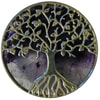
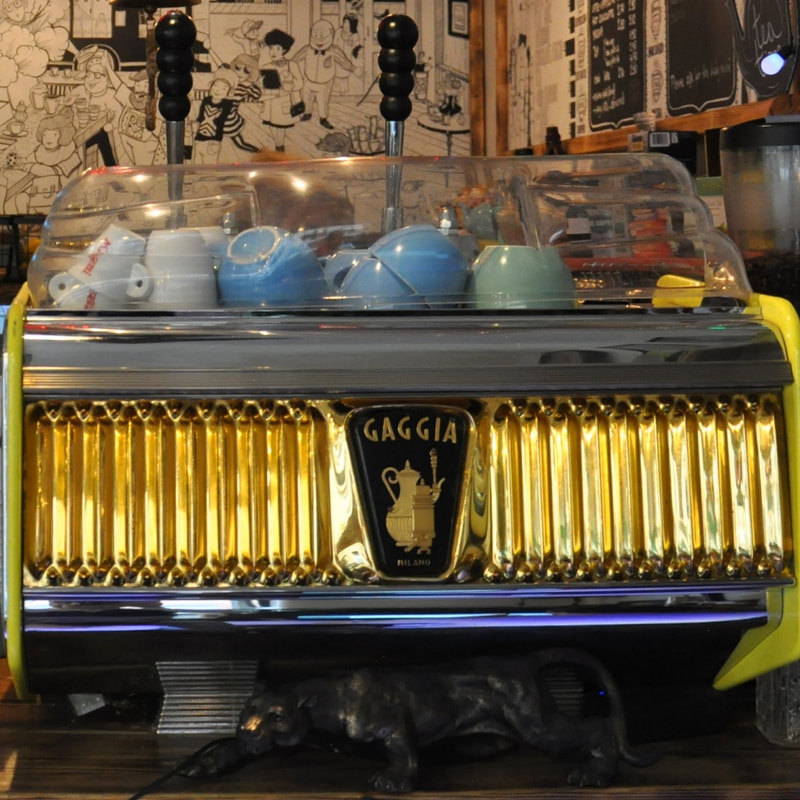
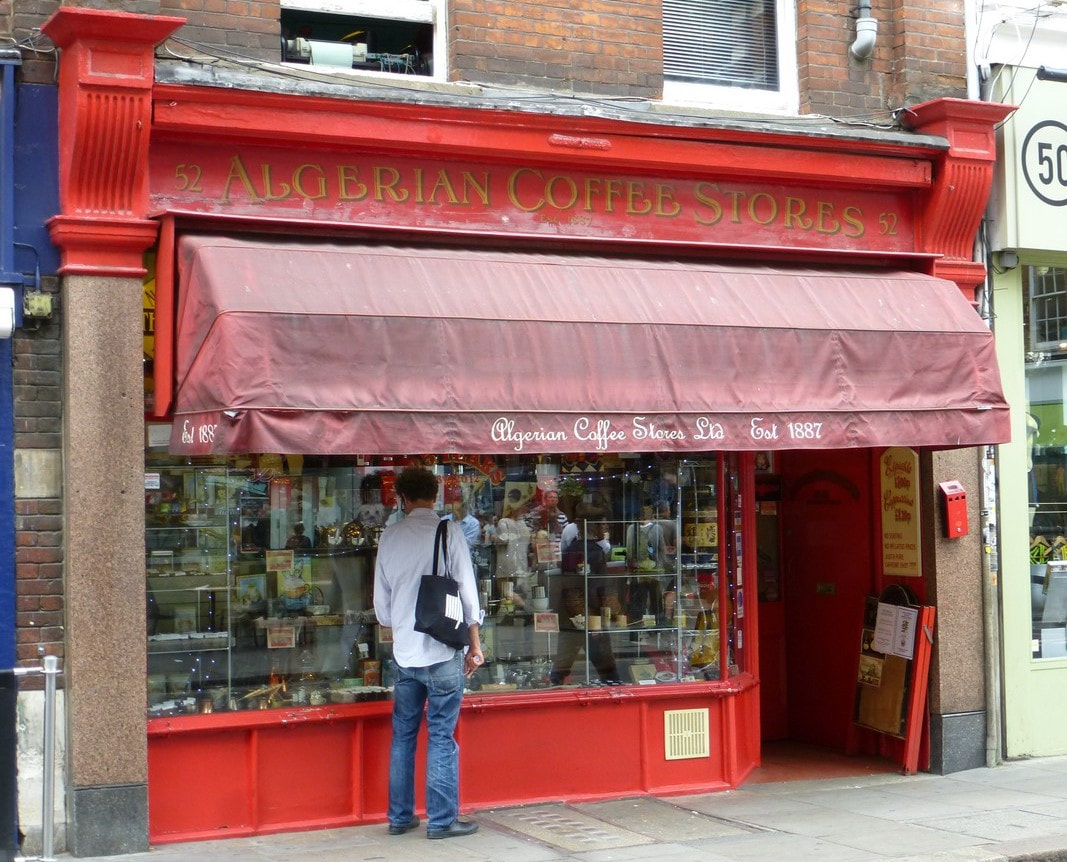
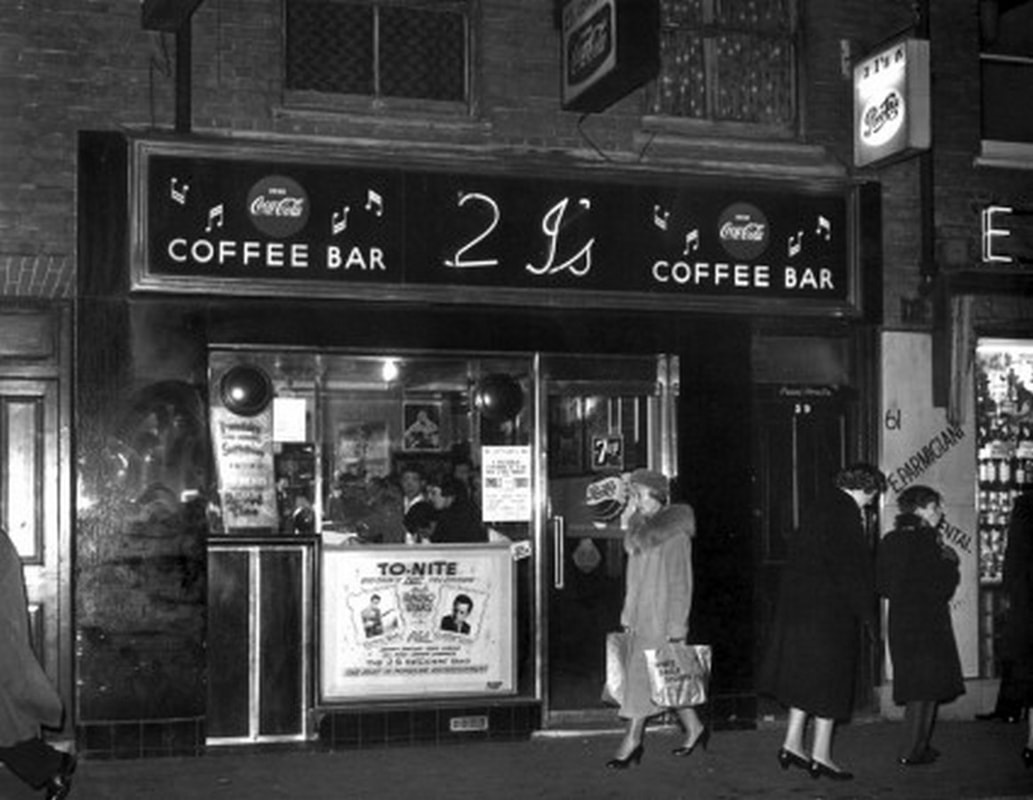
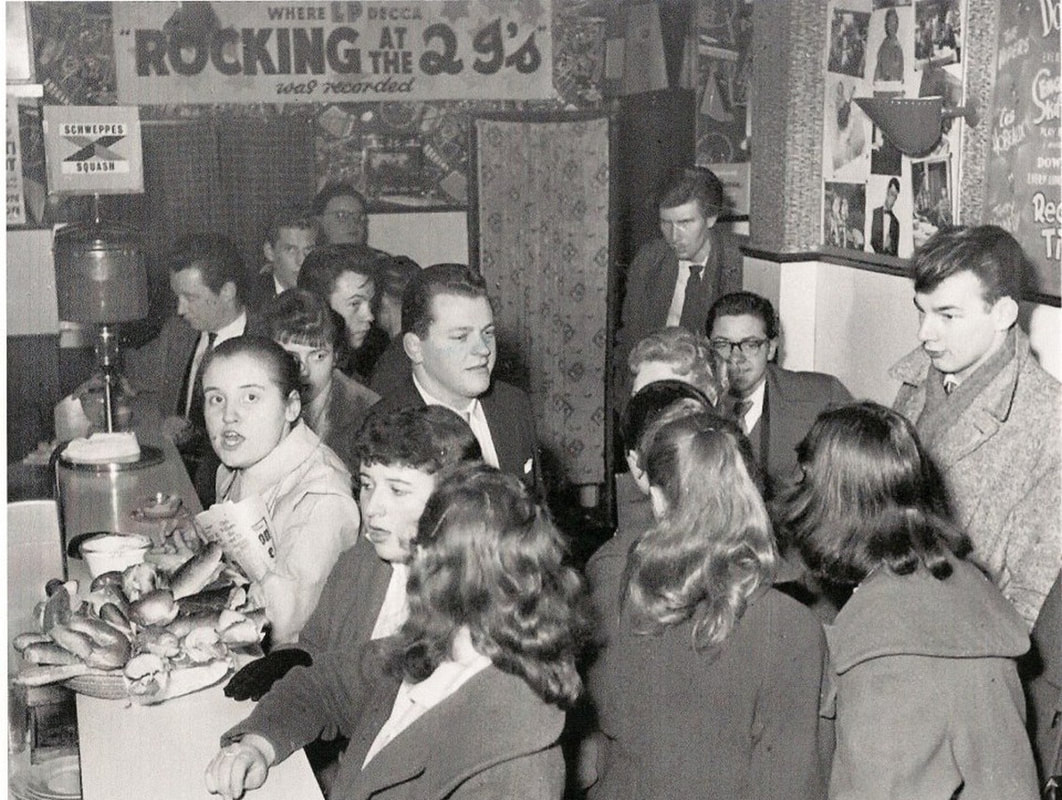
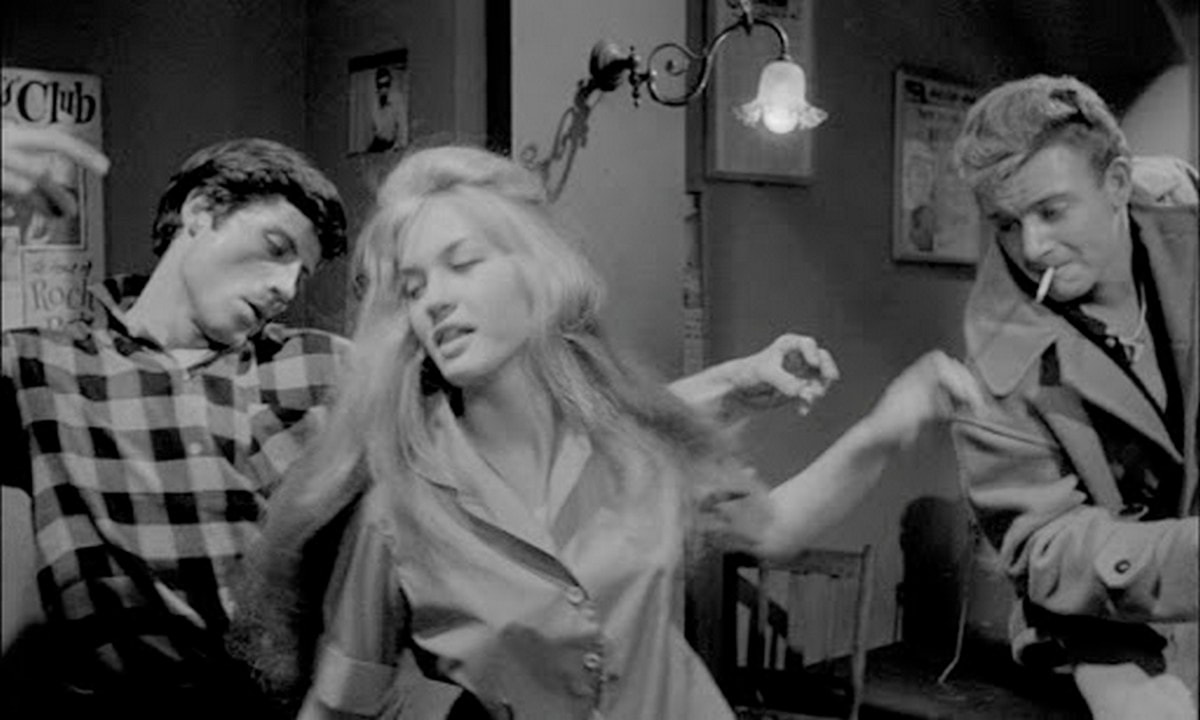
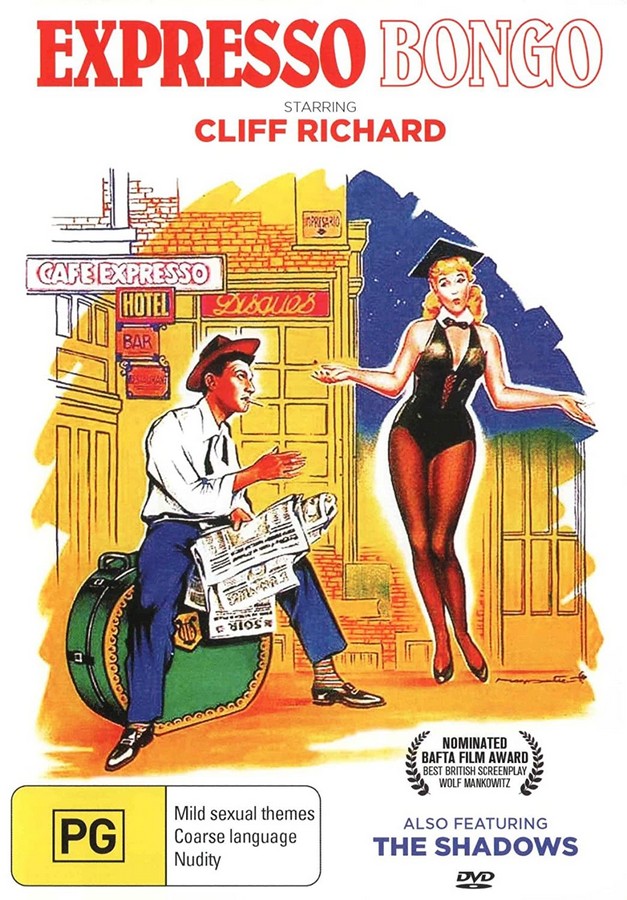
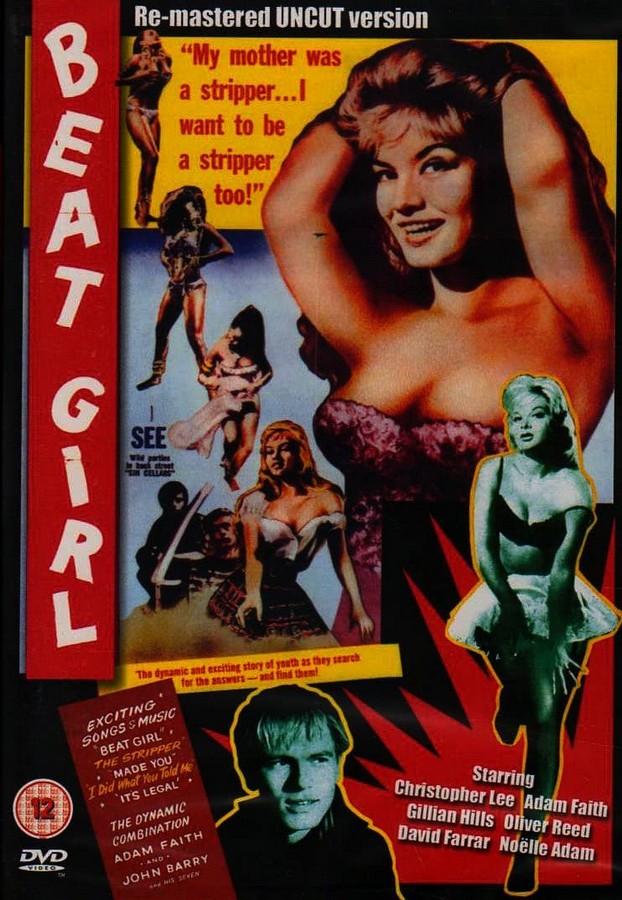

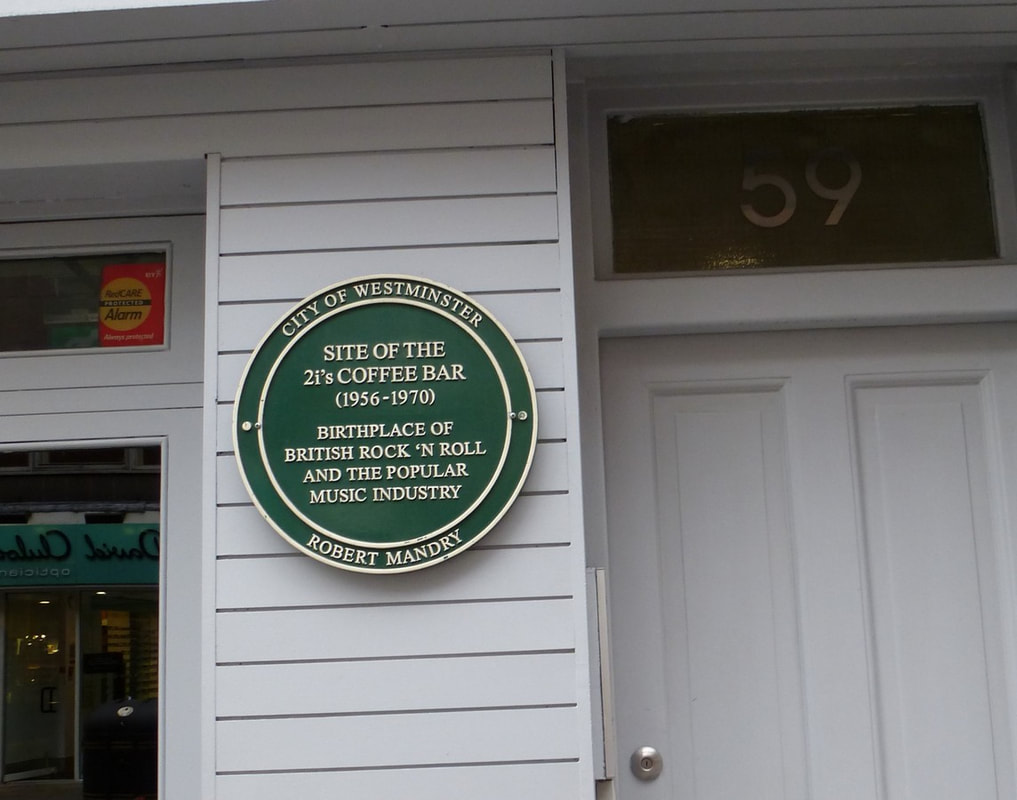
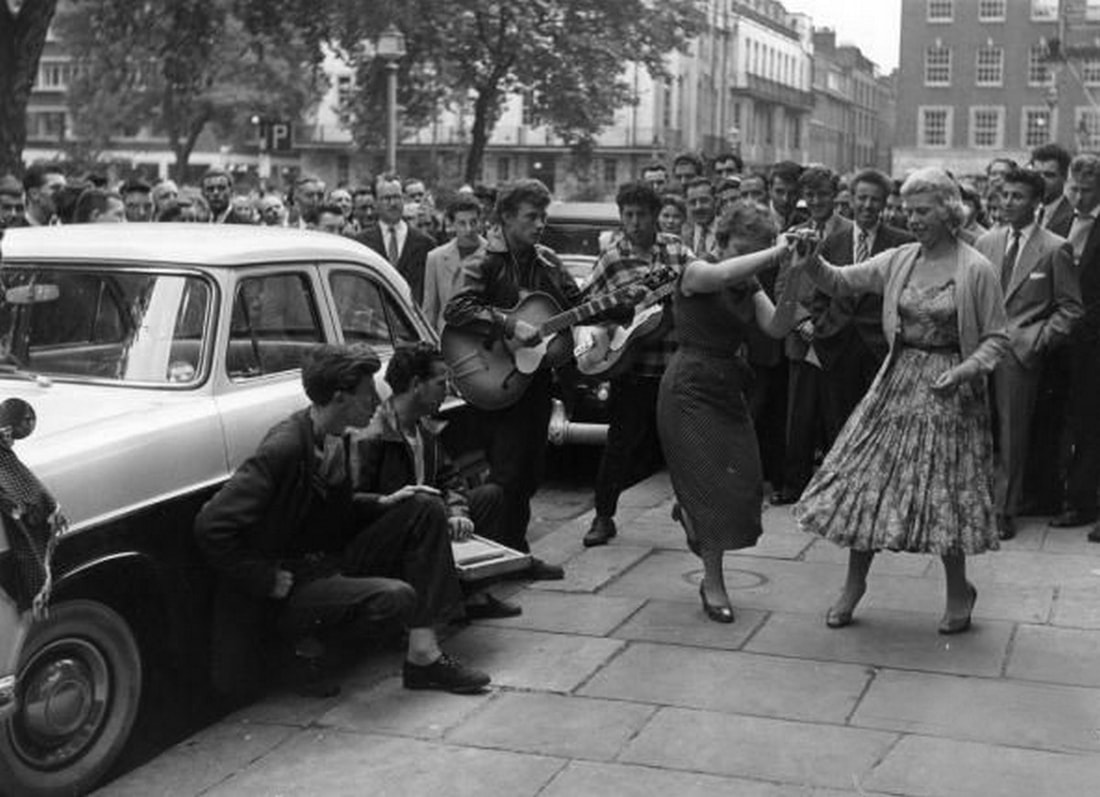
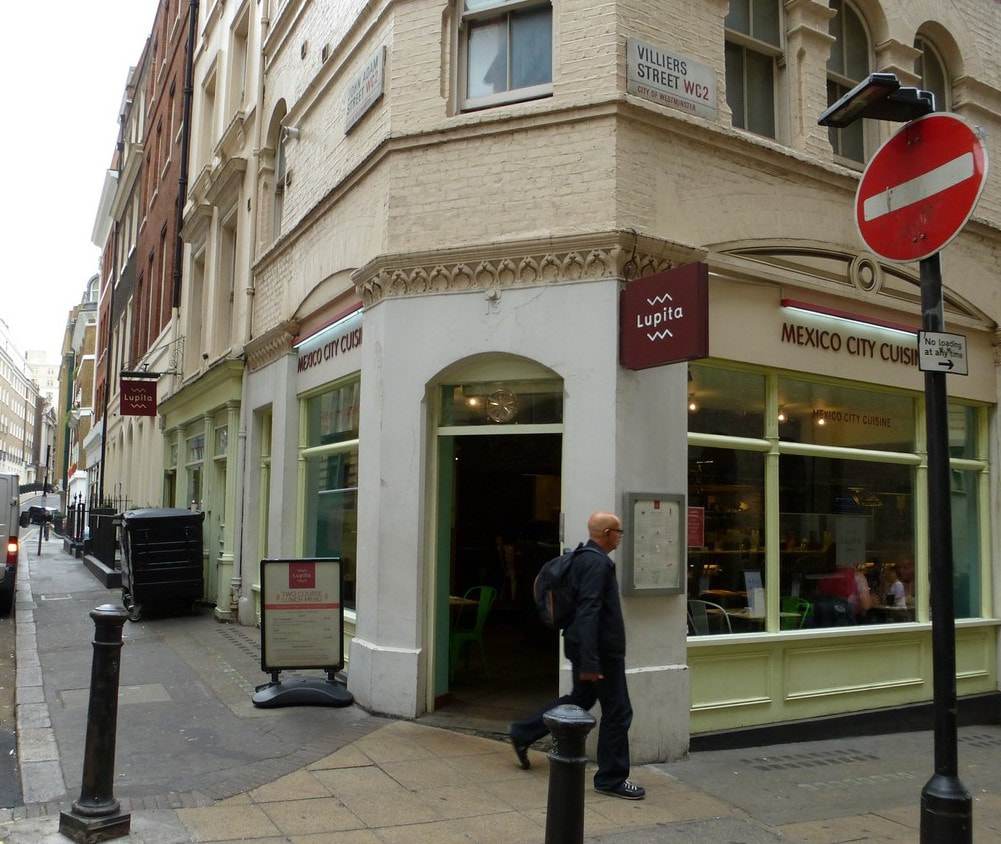
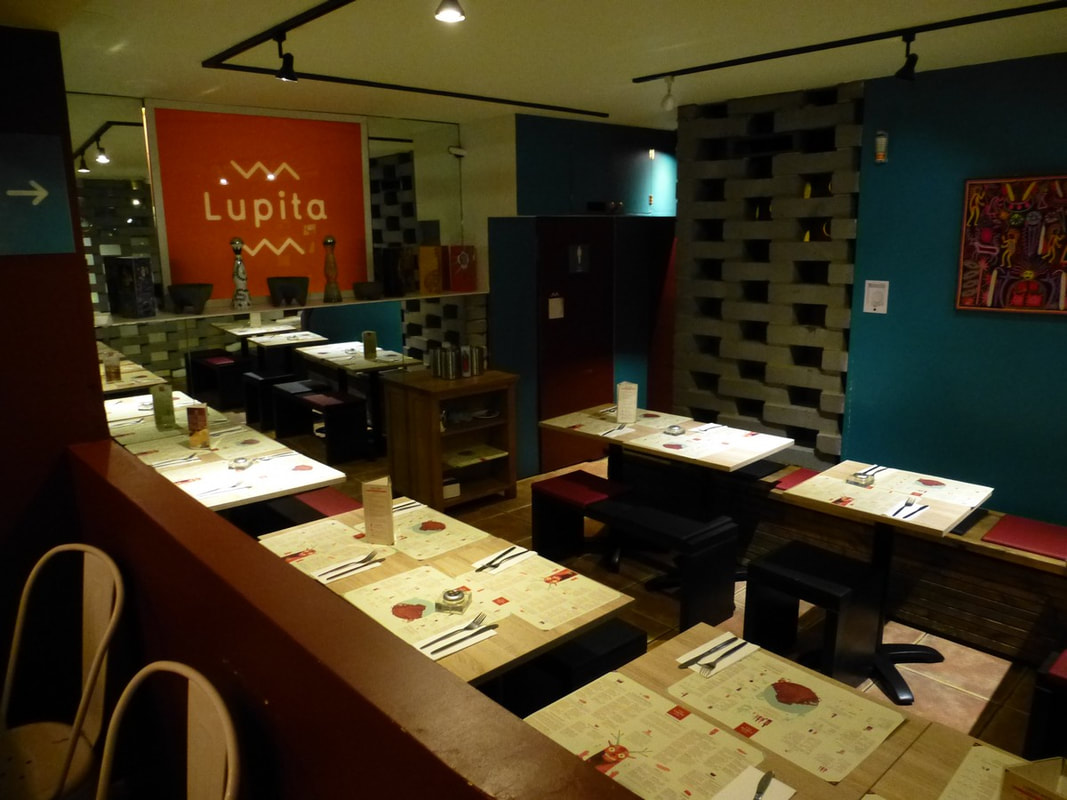
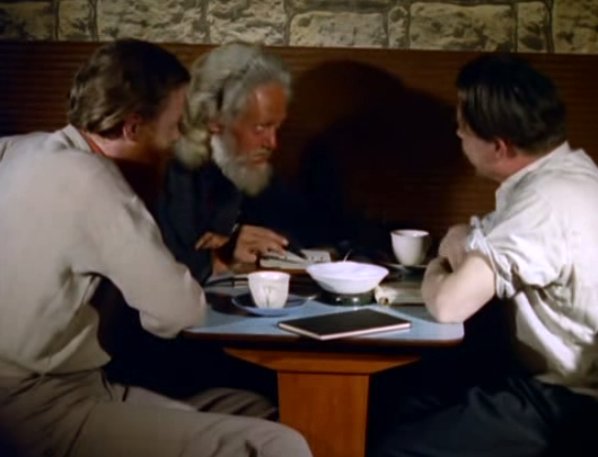
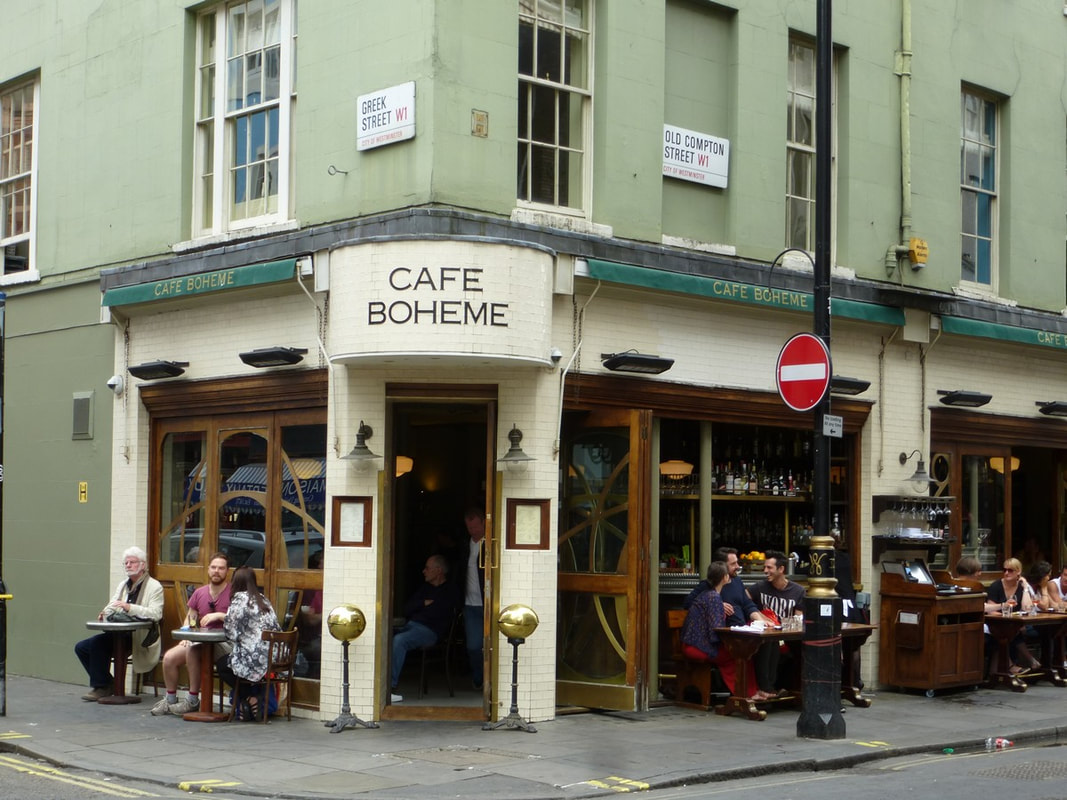
 RSS Feed
RSS Feed